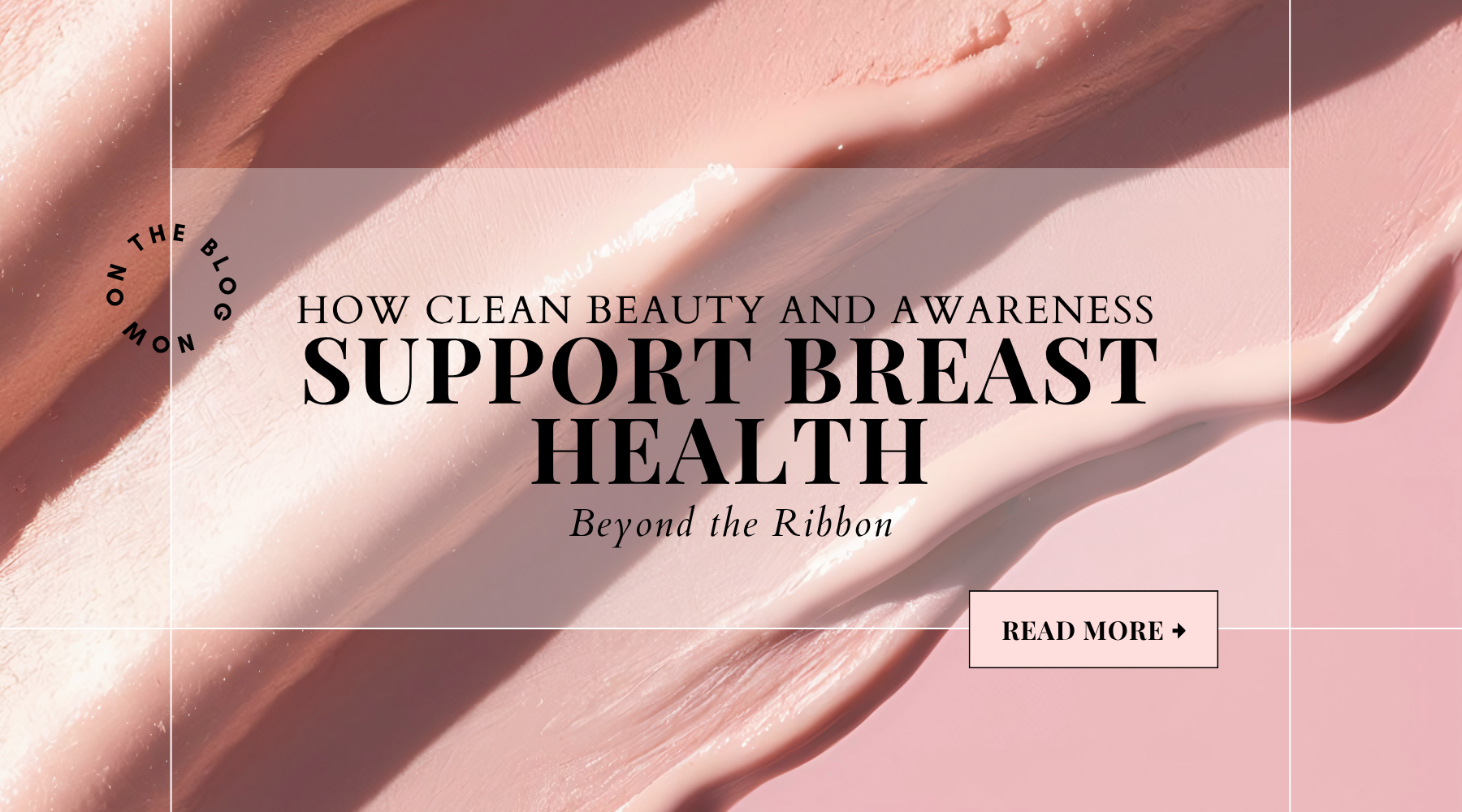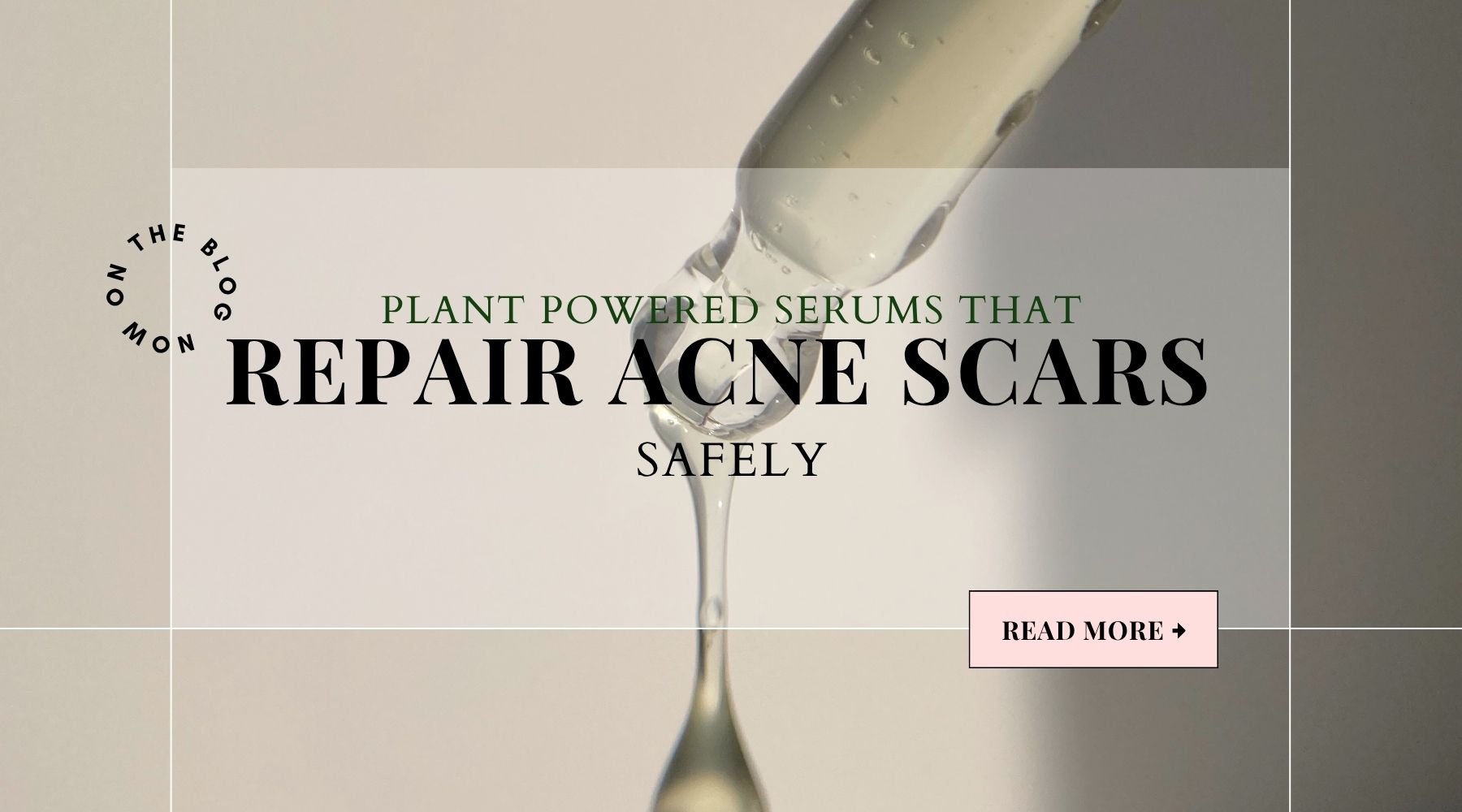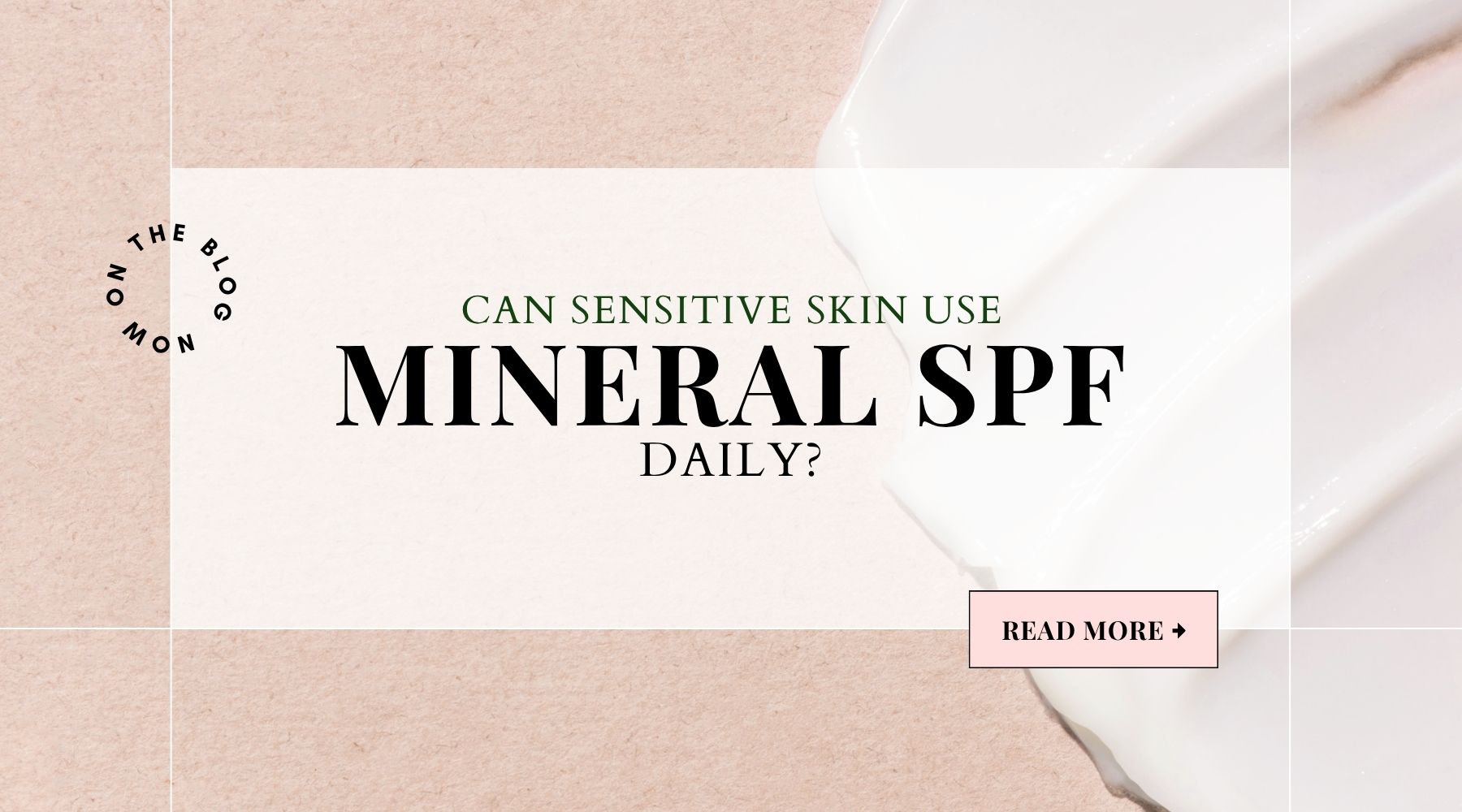October Awareness: How Clean Beauty and Endocrine Safety Support Breast Health

Beyond the Ribbon: Real Prevention Starts With Awareness
Every October, the world turns pink. From soda cans to fast-food packaging, we see the familiar ribbon that’s meant to symbolize hope and awareness. But somewhere along the way, this movement, once rooted in empowerment, became a marketing trend.
At Hey Bella, we believe awareness should be more than a color. It should be about education, prevention, and conscious choices that truly support women’s long-term health.
This month, we’re going beyond the ribbon to shine a light on what real prevention looks like starting with what we put on our skin, what we bring into our homes, and how we care for our bodies every day.
The Pinkwashing Problem
“Pinkwashing” happens when companies use breast cancer awareness campaigns to boost sales — even while selling products filled with ingredients that can harm your health. You’ve seen it before: pink labels on sugary snacks, synthetic candles, and body care products with known hormone disruptors.
The irony? Many of those same ingredients like parabens, phthalates, and synthetic fragrance have been linked to hormone imbalance, inflammation, and other health concerns that affect women daily.
Awareness should never come at the cost of honesty. Supporting women’s health means more than painting it pink, it means taking a hard look at the ingredients we use and the choices we make.
True Awareness = Education
Knowledge is power — especially when it comes to prevention.
Every product you use interacts with your body’s natural chemistry. Some ingredients can mimic hormones, block natural pathways, or burden your body’s detox system. These are known as endocrine disruptors — and they’re commonly found in conventional beauty and personal-care items.
What Is the Endocrine System?
Your endocrine system is your body’s communication network. It’s made up of glands like your thyroid, ovaries, and adrenal glands — that release hormones. These hormones control important functions such as mood, metabolism, sleep, growth, and reproduction.
When this system is balanced, your body runs smoothly — your energy, hormones, and overall health stay in sync.
What Are Endocrine Disruptors?
Endocrine disruptors are chemicals that can interfere with that delicate balance. They can mimic your natural hormones (like estrogen), block hormone signals, or throw off how your body regulates them. Over time, this can affect things like fertility, weight, mood, and even your risk of certain diseases.
These chemicals often hide in everyday products like:
-
Lotions and creams with parabens (used as preservatives)
-
Perfumes and body sprays with phthalates and synthetic fragrance
-
Hair products or cleansers with PEGs or formaldehyde releasers
Understanding what’s inside your products isn’t about fear — it’s about empowerment. When you know better, you can choose better.
🔎 How to Spot Endocrine Disruptors on Labels
You don’t need a chemistry degree to protect yourself — just a little label awareness.
Endocrine disruptors often hide behind long, scientific names or even under umbrella terms like “fragrance.”
Here’s a guide to help you spot them in your skincare, body care, and even home products:
Parabens (Preservatives):
- Used to prevent mold and bacteria, parabens are known for their hormone-mimicking effects.
- Look for: anything ending in -paraben —Methylparaben, Ethylparaben, Propylparaben, Butylparaben, Isobutylparaben, Isopropylparaben.
- Swap for: products labeled “paraben-free” or preserved with natural alternatives like our favorites radish root ferment, potassium sorbate, or gluconolactone.
Phthalates (Plasticizers + Fragrance Stabilizers)
-
Phthalates make fragrances last longer and plastics more flexible — but can interfere with hormone signaling.
- Look for: Diethyl phthalate (DEP), Dibutyl phthalate (DBP), Dimethyl phthalate (DMP), or “Fragrance/Parfum” with no transparency.
- Swap for: fragrance-free products or those scented only with essential oils (like Fontana Candle Co. or our clean body care collection).
Synthetic Fragrance (Hidden Mix of Chemicals)
-
The word “fragrance” or “parfum” can legally represent hundreds of undisclosed ingredients — including known hormone disruptors and allergens.
- Look for: Fragrance, Parfum, or Aroma listed without clarification.
- Swap for: brands that use 100% essential oils or disclose all fragrance components.
PEGs & Ethoxylated Ingredients (Stabilizers)
- Used to soften formulas or help ingredients blend, PEGs can be contaminated with 1,4-dioxane — a known carcinogen and potential endocrine disruptor.
- Look for: anything starting with PEG- or containing -eth (like Ceteareth-20 or Laureth-4).
-
Swap for: simple, non-ethoxylated formulas using natural emulsifiers like coconut oil, glycerin, or sucrose stearate.
Triclosan (Antibacterial Agent)
- Once common in hand soaps and toothpaste, triclosan can affect thyroid hormone metabolism and is now restricted in many countries.
- Look for: Triclosan or Triclocarban.
- Swap for: clean soaps or sanitizers with essential oils or plant-based antimicrobials.
UV Chemical Filters (in Conventional Sunscreens)
- Certain sunscreen filters like oxybenzone can mimic hormones and disrupt thyroid and reproductive systems.
- Look for: Oxybenzone (Benzophenone-3), Octinoxate, Octocrylene.
- Swap for: Mineral SPF formulas with zinc oxide or titanium dioxide.
🌿 Quick Tip:
If you see long, unrecognizable chemical names or ingredients ending in -paraben, -phthalate, or -eth, it’s worth pausing and checking the brand’s transparency. Clean beauty isn’t about perfection, it’s about awareness and small, consistent improvements that protect your health in the long run.
✨ Explore safer, vetted swaps in our Clean Body Care Collection and learn how prevention can be beautiful.
Scientific Evidence: What the Studies Say
Parabens
-
Parabens are a class of preservatives used in cosmetics and personal-care products. Recent reviews classify them as endocrine-disrupting chemicals (EDCs) that can interfere with hormone function. Science Direct
-
Some studies observed that parabens can bind weakly to estrogen receptors or alter hormone synthesis (e.g., interfering with estrogen, androgen, or progesterone pathways) in lab settings. PubMed
-
A recent human intervention study found that when participants stopped using products containing parabens and phthalates for ~28 days, they saw reduced levels of certain gene-expression markers linked to cancer-associated pathways in breast tissue. PubMed
-
In experimental animal and cell studies, parabens have been shown to influence the hypothalamic-pituitary-thyroid axis, interfere with hormone levels, cause DNA damage, and promote cell proliferation under certain conditions. MDPI
Phthalates
-
Phthalates are chemicals used to make plastics more flexible or used in fragrance carriers. They are widely recognized as endocrine disruptors. Breast Cancer Prevention Partners
-
A Danish cohort study found that women with very high cumulative exposure to one specific phthalate (DBP) had nearly double the risk of developing estrogen receptor–positive breast cancer compared to women with lower exposure. PMC
-
Another recent study found specific phthalate metabolites (MEP, DEHP, MEHHP, MEOHP) were significantly associated with increased breast cancer risk. SpringerOpen
Small Changes, Big Difference
Prevention doesn’t have to be daunting. Little shifts, repeated over time, can make a meaningful difference — especially as they add up in your daily routines.
Daily Clean Swaps:
-
Replace conventional deodorants with Rustic Maka Aluminum-Free Deodorant — free of parabens and synthetic fragrance
- Choose body oils and lotions free of synthetic fragrance and hormone-disrupting preservatives, like the Good Medicine Lomi Lomi Body Oil. This luxurious body oil nourishes the skin while offering a naturally captivating scent from Magnolia attar and Coconut attar — pure botanical distillations, never synthetic perfume — for a truly clean and sensorial experience.
-
Swap paraffin or synthetic wax candles for Fontana Candle Co. Coconut & Beeswax Candles — scented only with essential oils
-
Use mineral SPF instead of chemical UV filters that may meddle with hormone pathways
Lifestyle Habits That Support Hormone + Lymph Health:
-
Move your body (walk, yoga, dance) to enhance circulation and lymph flow
-
Gently perform dry brushing or lymphatic massage on the chest and underarm area
-
Stay well-hydrated — water helps your body flush out toxins naturally
-
Eat a whole foods diet rich in fiber, healthy fats, antioxidants, whole cruciferous vegetables, fiber, and protein to support detox and hormone balance, while minimizing ultra-processed foods, excess sugar, and toxins.
Every small change feeds into a bigger picture of prevention, health, and long-term resilience.
Empowered Women Make Informed Choices
True empowerment starts with awareness — not of symbols, but of substance.
When we educate ourselves and choose more intentionally, we’re not just supporting clean beauty, we’re supporting prevention, self-respect, and community care.
At Hey Bella, we stand for transparency, integrity, and wellness that lasts beyond a campaign. This October (and beyond), we invite you to join the journey:
💗 Share your favorite clean swaps
💗 Spread education — not fear
💗 Tag your posts with #BeyondTheRibbon to inspire others toward conscious, health-supportive beauty
In Closing
This October, we honor awareness by redefining it — not with ribbons, but with knowledge, rooted in real science and real choices.
Let’s create a future where prevention isn’t a one-month reminder, but a daily act of self-care, love, and respect for the body we were given. Because beauty isn’t just surface-level — it’s how we care for ourselves, inside and out.



Comments